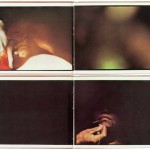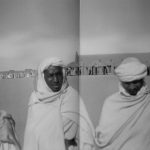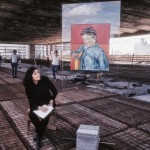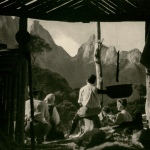Summary 03
Publicado em: 3 de August de 2013FEW PHOTOGRAPHERS are capable of creating a solid visual work and, at the same time, underscoring the fundamental motives that lead to the construction of images. From the clash with the 1970s American landscape, photographer and professor Stephen Shore reaches the delightful conclusion: shape or form is not an art syrup that you pour over the content; for this to make sense, it needs to come from one’s own experience.
The menu of this issue includes several photographers who have dedicated their work to photographing landscapes as a means of understanding the world. It may be constructed with scissors and sellotape on sheets of glass, as in the little known series Sobras [Leftovers] by Geraldo de Barros, completed in the last three years of his life. It can also be achieved through elaborate shots, similar to those by the Italian Luigi Ghirri. Virtually unknown in Brazil, Ghirri was both a great photographer and a writer, and combined these talents to provide an insight into some of the most prosaic issues. On his return from a trip to the São Francisco River, Caio Reisewitz brings back some monumental backland scenes.
Brought up as a photojournalist in Johannesburg, Santu Mofokeng discusses the representation of the black population and challenges the idea of social documentary. The ownership of land, economic marginalization and spirituality are just some of the political elements in his most recent work. Sent to Brasília to search through the National Archive, reporter Plinio Fraga dug up a surprising find: from the 15,000 photos recently released to the public, at least three of them prove that Brazilian children had been sent into exile and had been documented by the military dictatorship. Dorrit Harazim discusses the life of an American teacher that changed the course of history after finding two photographs: of a lynching in Indiana, Abel Meeropol wrote a song; of the orphans of a couple of spies, the poet-composer built his family.
For the past ten years, Guy Veloso has travelled throughout the country after penitents. The filmstrips show how the photographer deals with his subjects and uses them to build his narrative. A tragic melody also echoes in two other essays in the magazine. With a vast work, despite her short career, Francesca Woodman transformed her camera into her best friend. Keen to discuss the history of his country, the Lebanese-born Walid Raad constructed his fictional war works by displaying bombs that apparently had been left behind.
In 1931, August Sander spoke on the radio about the power of communication through photography. A decade later, during the war, the German photographer would be persecuted and part of his archive destroyed. As a tribute to one of the best portrait artists in the 20th century, ZUM publishes for the first time a translation of a crucial lecture to understand Sander’s work.







